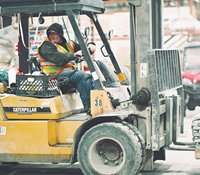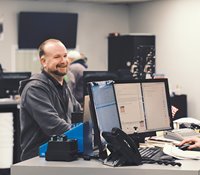 110-plus years by not being afraid to embrace change. With three other locations in Wakefield, Bristol, and Westerly, RI, the fourth generation family-owned lumber dealer had humble beginnings. “We originally started off as a sawmill way back in the day,” Matt Semonik, COO of Arnold Lumber Company reminisces. “We were taking rough cut lumber, or taking trees and then cutting them into rough cut lumber.
110-plus years by not being afraid to embrace change. With three other locations in Wakefield, Bristol, and Westerly, RI, the fourth generation family-owned lumber dealer had humble beginnings. “We originally started off as a sawmill way back in the day,” Matt Semonik, COO of Arnold Lumber Company reminisces. “We were taking rough cut lumber, or taking trees and then cutting them into rough cut lumber.It wasn’t until the early 70s, when Art Arnold Jr. took over the business from his father, that we really became a building materials company. Nine years ago, he shifted and got out of the day-to-day operations and handed it over to his daughters, Kate and Allison. So it’s Allison Arnold and Kate Arnold Carret, who are the two managing owners in the business and their sister, Liz Arnold Siddle. And so the three women actually own the business now, and Kate and Allison are co-CEOs.”
 Today, the company has its eyes on growth, as it has since its founding. It’s biggest percentage of annual sales—just shy of $90 million—now comes from special orders that include windows, doors, and special decking orders. And that financial success Semonik credits to an aggressive embracing of technology. “In the past nine years, we have gotten really, really aggressive at leveraging technology to help us run our business on a day-to-day basis. We haven’t been afraid of it. We’ve embraced it around every corner,” he says.
Today, the company has its eyes on growth, as it has since its founding. It’s biggest percentage of annual sales—just shy of $90 million—now comes from special orders that include windows, doors, and special decking orders. And that financial success Semonik credits to an aggressive embracing of technology. “In the past nine years, we have gotten really, really aggressive at leveraging technology to help us run our business on a day-to-day basis. We haven’t been afraid of it. We’ve embraced it around every corner,” he says.“We are actively involved with BisTrack with Epicor, and we leverage Epicor Warehouse Management Software pretty heavily. We haven’t been afraid to try different things from a technology standpoint, and I think that’s given us an edge.”
Semonik is quick to add, however, that technology is only part of what differentiates Arnold Lumber from the competition. “We’ve embraced technology, but the focus was, how do we become everlasting? How do we ensure our viability into the future?” he says. “Part of that was embracing technology. The other part was attracting talent that’s going to take us into the future. When I got into this industry nine years ago, I heard so much about how this is an industry that’s graying out, how this is an industry that doesn’t necessarily have that next generation to be able to take it into the future, and didn’t necessarily have the means to be able to develop and grow those people.”

